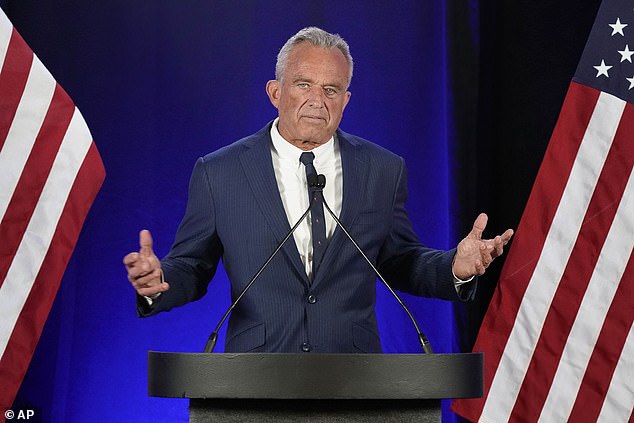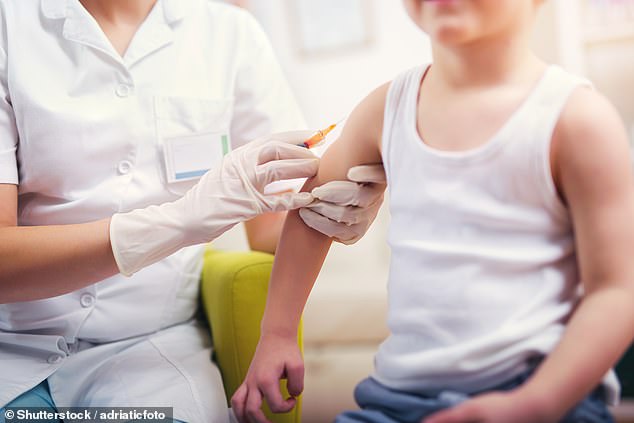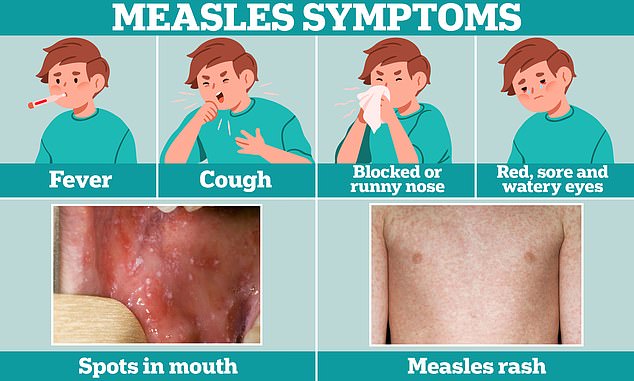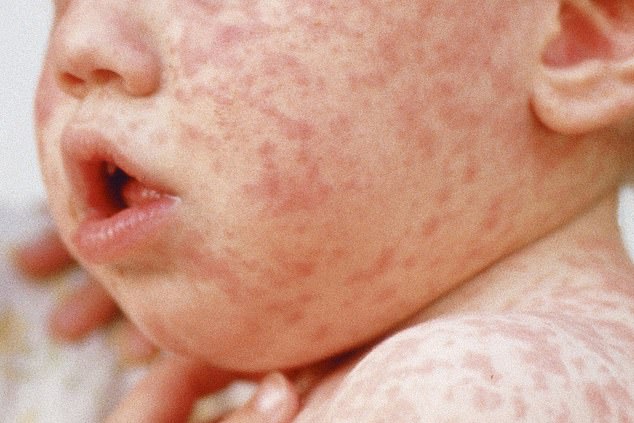International health agencies are sounding the alarm about a rise in measles and a decline in vaccination rates against the deadly (and preventable) virus.
Last year, more than 10 million people contracted measles, up from 8.6 million in 2022, according to a joint report from the CDC and the World Health Organization.
At the same time, the report found that vaccination rates remained low, following a significant drop in 2021.
Measles, which typically causes a rash, cough and high fever, can quickly escalate to severe symptoms in one in five unvaccinated people, causing pneumonia, brain inflammation and death.
In 2023, the virus caused 107,500 deaths, most of them children under the age of five, as children, whose immune systems are fragile, are especially at risk when infected with the disease.
Since the Covid pandemic, the number of people skipping the vaccine has been increasing. The new report found that only 83 percent of people worldwide in 2023 received the measles vaccine, virtually unchanged from a record low in 2021.
Experts suggest this has to do with people missing medical appointments during Covid and increased vaccine hesitancy, in part promoted by senior figures such as Robert F. Kennedy Jr, the newly appointed head of the Department of Health and Human Services.
In response to this trend and the rise in measles, WHO and CDC officials reiterated that the best way to prevent the disease is through vaccination.
WHO Director-General Dr Tedros Adhanom Ghebreyesus said: “The measles vaccine has saved more lives than any other vaccine in the last 50 years.”
Measles in children may look like other skin rashes. Most people who died from measles in 2023 were under five years old

RFK Jr will lead the Department of Health and Human Services in Donald Trump’s second term as president. The lawyer claimed that fluoride found in tap water is toxic and promoted the idea that a herbicide called atrazine can cause people to have “sexual confusion” and “gender confusion.”
In 2000, measles was declared eradicated in the United States, following a decades-long vaccination campaign that began in 1978.
Other countries in the six regions covered by WHO have committed to making similar progress by vaccinating their citizens, with the goal of vaccinating 95 percent of them.
This 95 percent standard is the goal of herd immunity, which represents the number of people who need to be vaccinated to stop the spread of an infectious disease.
But the United States and other countries such as the United Kingdom and Australia have strayed from that goal, and outbreaks are now occurring around the world, according to the new report.
The WHO and CDC reached their conclusions by processing data from vaccination programs and measles outbreaks in 149 different countries.
The report found that the number of countries experiencing large-scale outbreaks increased from 36 to 57.
Almost half of these outbreaks occurred in Africa.
Additionally, between 2000 and 2019, the number of people who received the measles vaccine increased from 71 percent to 86 percent.
The report found that progress slowed in 2021 thanks to the pandemic. Only about 81 percent of people received the measles vaccine in 2021, the lowest rate since 2008.
Public health officials expected the drop to be temporary, but the 2023 report shows the trend continuing.
Now, only 83 percent of the world’s population has received the vaccine. In the U.S. specifically, rates are slightly higher but still below the federal target, with 92.7 percent of kindergartners vaccinated.
The number of people dying from the disease has decreased slightly: from 116,800 in 2022 to 107,500 in 2023. This is because many of the new cases of the disease occurred in countries with strong health systems, where children have less likely to die. infectious diseases in general, according to the hill.
The CDC has estimated that the vaccine has saved 60 million lives in the 21st century.
Despite these positives, the anti-vaccine movement appears to be gaining momentum in recent years.
This could be partly because pandemic vaccine mandates may have led more people to be vaccine-hesitant, said Dr. Anthony Fauci, former director of the National Institute of Allergy and Infectious Diseases.
Dr. Fauci told the New York Times that Americans may have felt their freedoms were infringed upon when they were told they had to get vaccinated, inadvertently creating distrust in the health care system.

The CDC estimated that the measles vaccine has saved 60 million lives since 2000. Doctors recommend that children receive their first MMR vaccine between 12 and 15 months of age.
He said, “Man, I think, almost paradoxically, there were people who were hesitant about getting the vaccine thinking, why are they making me do this?”
This hesitancy has been exploited by vaccine advocates like RFK Jr, who has become popular for supporting a number of conspiratorial healthcare movements.
He is furious against tap water, both because of debunked claims that fluoride is neurotoxic and because of chemicals in the supply that could turn children transgender.
He has suggested that AIDS is not caused by the HIV virus, that the food industry is committing “mass poisoning” and that vaccines cause autism.
These claims have struck a chord with many Americans, and experts suggest that RFK Jr’s arguments have helped re-popularize the anti-vaccine movement.
For the WHO and CDC doctors who published the report, emphasizing the safety and effectiveness of the vaccines seemed paramount.
Dr Ghebreyesus added: “To save even more lives and prevent this deadly virus from harming the most vulnerable, we must invest in the immunization of all people, no matter where they live.”
Doctors recommend that children receive two doses of the measles, mumps and rubella vaccine: the first between 12 and 15 months and the second between four and six years.
It is crucial that people receive it at this age to avoid transmitting deadly diseases to babies whose immune systems are too fragile to protect them against the disease.
Injecting a damaged strain of virus into the body, which does not make the person sick, trains the immune system to recognize the invader and be able to fight it in the future to prevent disease, according to Cleveland Clinic.
The vaccine works against the measles, mumps and rubella viruses because doctors designed it to contain components of all three viruses.

Cold-like symptoms, such as fever, cough, and runny or stuffy nose, are often the first sign of measles.
In recent years, there have also been increases in mumps and rubella.
In 2024, there were 277 cases of measles in the U.S., 89 percent of them in unvaccinated people, the CDC reported.
Receiving two doses of the MMR vaccine is about 97 percent effective in preventing the disease. In the rare case that a vaccinated person does get the disease, they are less likely to become seriously ill than unvaccinated people.
Common early signs of measles include fever, dry cough, runny nose, sore throat, swollen eyes, and white patches in the throat.
In the rare case that someone becomes more severely ill with measles, symptoms progress to pneumonia, encephalitis, bronchitis, diarrhea and vomiting. Any of these symptoms can lead to hospitalization and, in the worst case, death.
According to the CDC, about one in five unvaccinated Americans who contract the virus are hospitalized with the condition.
There are no specific treatments for the virus, according to the National Foundation for Infectious Diseases. If someone is hospitalized, they can be given vitamin A to boost their immune system and help them overcome the virus more quickly.
Since there is no treatment for the disease, doctors urge that the best option is vaccination, which can prevent serious illnesses.
According to the National Foundation for Infectious Diseases: ‘If you are not sure if you have been vaccinated, it is safe to receive another measles vaccine. The only people who should not be vaccinated against measles are those who are immunocompromised or pregnant.’

